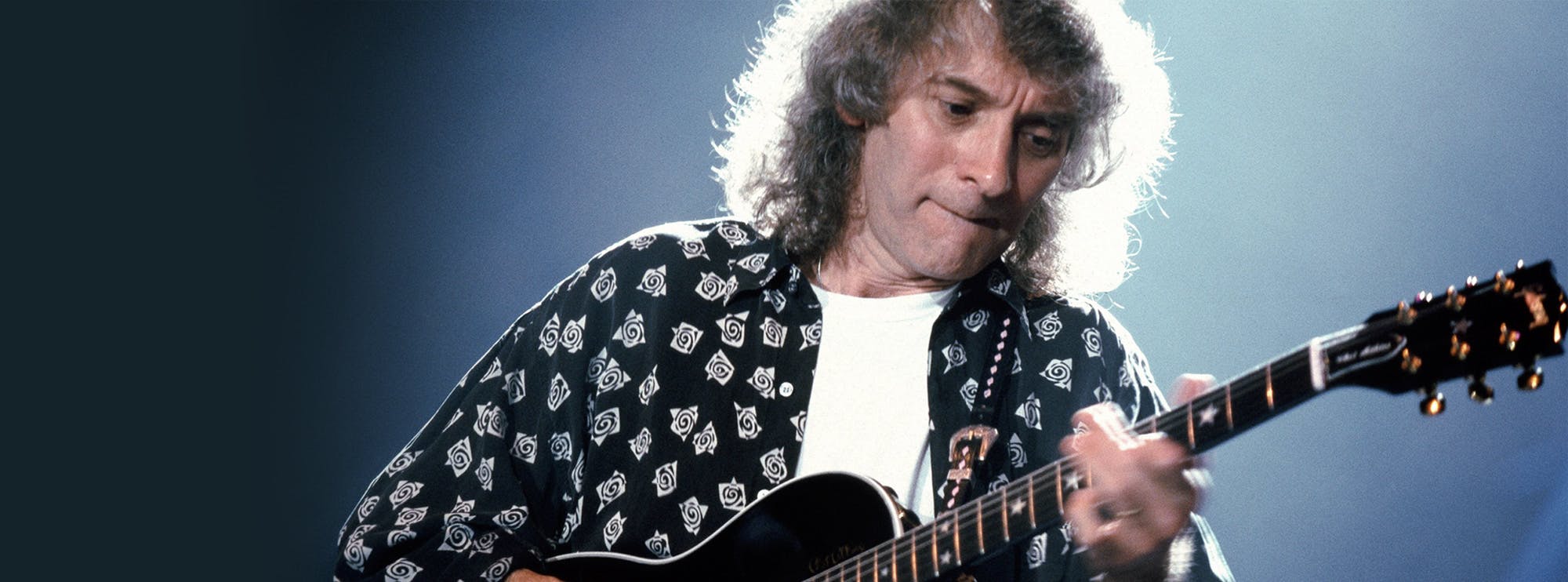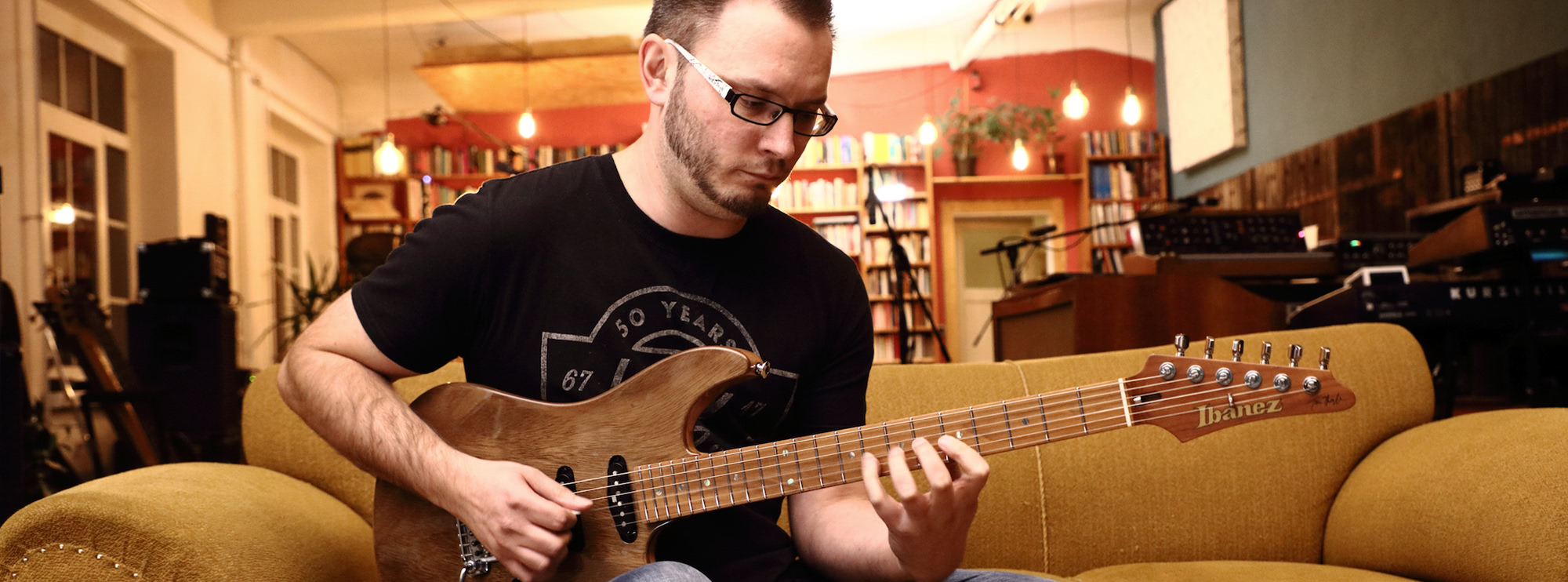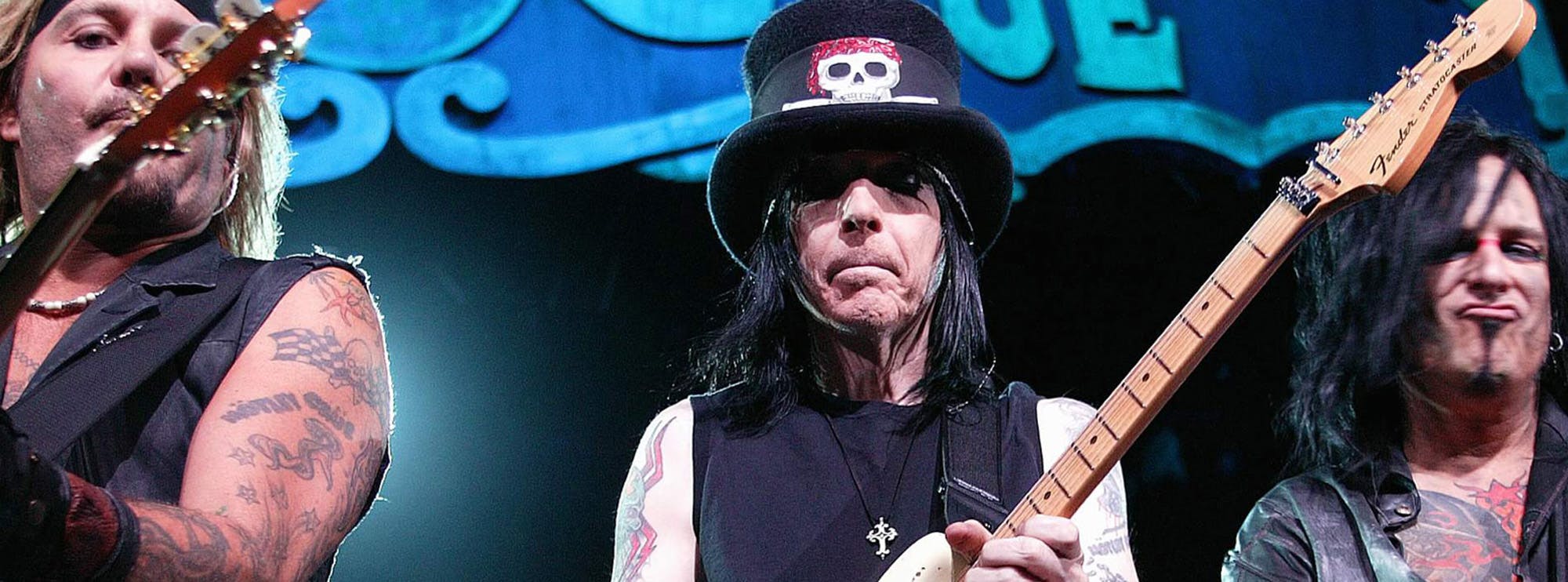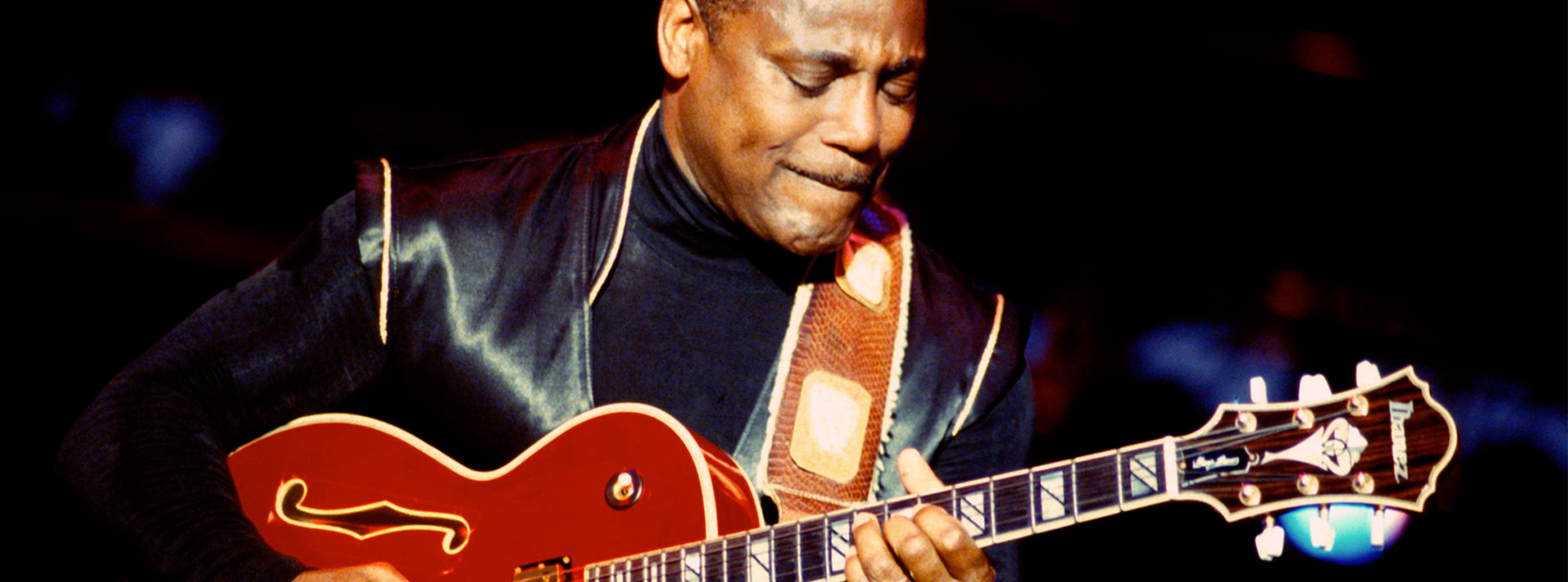Eddie Van Halen has been hailed as the godfather of heavy metal and a post-Hendrix pioneer of modern Rock guitar. His contributions, influence and impact on guitar playing have been immeasurable, and not just because of his technical abilities. Eddie was a pioneer with the actual instrument too, being (arguably) first person to use a Floyd Rose system. When you look at most modern Rock guitars, there will be a certain element of how that instrument is built, or configured that you can trace back to Eddie Van Halen. Van Halen also brought Rock to the masses, composing catchy hard rock tunes, and pioneered a genre that was a lifestyle in the USA during the 80’s hard rock music you could party to!
This Eddie Van Halen style guitar lesson tech session is a little teaser for you, as the licks and track are taken from my LickLibrary DVD -Quick Licks Van Halen, which is available from www. licklibrary.com. In this lesson we are giving you eight Eddie Van Halen-style guitar licks to get your teeth into, but if you want to delve deeper into Eddie’s unique and innovative playing style then be sure to grab a copy of my new DVD!
Eddie’s tone is not a scooped modern Metal tone - in fact it’s pretty clean, and is really more of a heavy overdrive.
Jamie Humphries
There are obvious eras to look at with Van Halen; the late 70’s and early to mid-80’s David Lee Roth period, the Sammy Hagar period, with a more processed guitar sound, and in many cases more radio friendly hard Rock, that lacked the tongue in cheek lyrics and showmanship of Roth, but which to many boasted more a more mature sound and writing style. For our Tech Session, and the Quick Licks DVD, I’ve chosen to focus on the Hagar period, with a riff that is based on a similar progression to Pound Cake. All of the licks covered in this lesson are based around the key of E minor. For those of you that prefer the David Lee Roth era, be sure to check out my Quick Licks Van Halen Vol I, which is based more on the band’s early sound.
Lick 1:
Is our opening lick, performed over the drum intro. This is an interesting lick which involves tapping two notes with two fingers of your picking hand on the B and G strings and pulling-off to two fretted notes. This lick is pretty tricky as you have to shift both hands up the neck chromatically, as it outlines shifting dominant chords.
Lick 2:
Features a similar lick to the intro lick in from the Michael Jackson track “Beat It”. This lick includes string bends and slides, with artificial harmonics being performed by tapping directly over the fret wire. This lick will take a little practice to be sure that the harmonics are achieved cleanly and clearly.
Lick 3:
Is another Beat It style lick, and includes a three note per string figure that also includes some tapping on the 1st and 2nd strings. This lick concludes with a bluesy bending figure.
Lick 4:
Is a whammy bar lick that includes a legato figure that pedals off of the open 2nd string. As the lick is performed, you should dip the bar, scooping into the notes. This lick concludes with a Blues-based bending figure and a whammy bar dive.
Lick 5:
And it’s time to get your picking hand moving. Eddie has a very unorthodox approach to picking, where he holds the pick with his middle finger and thumb, and arches his wrist, affectively flicking the string with the pick. I would suggest using whatever approach you find comfortable when tackling fast picking. The lick features a climbing figure based around E minor that is performed with fast tremolo picking.
Lick 6:
Features one of Eddie’s bluesier sounding licks and mixes up notes found in the E minor pentatonic scale, with big bends and plenty of vibrato. Make sure you select the neck pickup for a warm and creamy tone.
Lick 7:
Is another blues based lick which is pretty straightforward, but makes use of some pretty big bends. Don’t be deceived by this lick, and be accurate with your bending pitch, and again pay attention to your vibrato technique.
Lick 8:
Is our final teaser lick, and features a descending pentatonic phrase that makes use of an interesting rhythmic figure. This is a great lick, as it is so rhythmically interesting, and has a great groove against the solid driving rhythm section of the band.
So there you have it, a selection of tapping, picking and bluesy EVH licks. I hope I’ve whetted your appetite enough with these few licks for you to check out the new Quick Lick’s Vol II DVD, for the full solo, and in-depth analysis. Make sure you check out the video in the magazine for a close up look of the licks being broken down, and also performed, as well as tips on tone.
Good Luck!
Just Like Eddie - The Sound
So you’ve mastered the licks and riffs, but still that secret ingredient is missing. It doesn’t quite sound like Eddie Van Halen. Jamie Humphries looks at the guitar gear used by the great man over his long career - and then shows you how to achieve the tones on a budget-priced rig!
Tone is the Holy Grail for many a guitar player. As well as wood-shedding your chops and nailing your favourite riffs, getting the right tone and sound is equally as important. But let’s face it, most often we’re listening to millionaire Rock stars who can afford the gear that many of us only dream of. So in this feature I am first going to look at Eddie’s ever-changing gear over the years, and then suggest some ways you can approach that legendary tone, using the more budget-friendly gear that most of us use.
After Jimi Hendrix, Eddie Van Halen is without a doubt one of the most important figures in the development of Rock guitar. Not only did Eddie turn the guitar community on its head with his blistering style, but also with his equipment. Like everything he did, he didn’t conform to what was considered the norm and his guitar is a great example of that. Even the man himself is surprised by the impact that his homemade guitar has had, and continues to have, on guitar companies and guitarists alike.
The story starts with our hero wanting the best of both worlds - a guitar that was comfortable and fast like a Fender Strat, but had a thick, warm, full tone like a Gibson. So Eddie decided to morph the two, have a Fender style guitar but have the pickups of a Gibson (see this issue’s lost interview for the story from the horse’s mouth - Ed). The ‘Frankenstrat’, as it is affectionately named, started life on the “seconds” pile. The body was made of ash and Eddie also bought a Strat-style maple neck. He fitted a Fender Vintage tremolo and wired in a single Gibson PAF pickup, which he dipped in paraffin wax to reduce microphonic feedback. He painted the guitar with the now famous black and white stripes and cut out a black pick guard from some plastic using a soldering iron to smooth the edges. This is the guitar that started it all, and is the one seen on the cover of Van Halen I.
Due to the number of imitators, Eddie started using a different guitar for Van Halen II, one that featured the famous black and yellow stripes, but Eddie was frustrated with this one and soon the original guitar was back in action. An original Floyd Rose bridge was fitted, replacing the vintage Fender bridge and he also screwed a 1971 Quarter coin to the body that was used to keep the bridge flush to the body and stable. With more and more companies trying to cash in on his guitar, and also countless imitators, Eddie fitted a single coil in the neck that didn’t work, and fixed a five-way selector into the routing where you would normal find the middle single coil, just to confuse people and keep them guessing about his secrets! Although this guitar was retired in the mid-80s, recently Fender released a limited run of replicas of the Frankenstrat, which featured every dent, scratch and cigarette burn and was so accurate Eddie himself found it hard to spot the difference!
Eddie has used lots of other guitars in his career, including Les Pauls and an Ibanez Explorer-style Destroyer, which had a huge lump of the body cut out and was known as The Shark. Eddie stopped using this guitar following its cosmetic surgery, as it altered the tone too much. He has also used Steinberger headless guitars with the Transtrem, also finished in his signature stripes.
During the 80’s Eddie switched to Kramer guitars, the New Jersey company building him a newer version of the Frankenstrat, featuring a prototype Pacer body and with the instantly recognisable trademark hockey-stick headstock. Eddie used various versions of this guitar, including the Hot for Teacher guitar and the legendary 5150.
By the end of the 80’s Eddie surprised the guitar community by designing a guitar with the Ernie Ball Musicman guitar company, that was totally unlike its various stripy predecessors. The Musicman EVH guitar was a single cut guitar, almost a cross between a Les Paul and a Tele, with a slab body with no contouring. It featured a flame top, two humbuckers, with the neck pickup functioning this time, and a single volume control that said “tone” on it! The neck was created by scanning the profile of Eddie’s most favourite guitar neck into a computer, and had an instantly played-in feel. These instruments were produced in small quantities and are now very collectible.
Eddie then moved camp again - this time to Peavey. It made sense, Peavey at the time producing his signature 5150 head. The Peavey Wolfgang proved to be a very popular guitar, slightly resembling the Musicman, but featuring an extended top horn.
Eddie finished his relationship with Peavey and moved next to Fender, first producing and using the Charvel Art Series, and then the Frankenstrat. Now with the help of Fender, Eddie has his own brand, EVH Gear, and produces the newest Wolfgang guitar, of which you can read a full review in this issue.
Amps and Effects
For years Eddie used a mid 60’s 100 Watt Marshall Super Lead, which is rumoured to have been modified by Jose Arrendo. As we’ve seen elsewhere in this issue, Eddie would get that elusive tone by basically running the amp flat-out, and controlling the output level with a Variac, which allowed him to run the amp at a lower voltage. He would also run a dummy load box after the Marshall and send the output of the box to his effects and then to a power amp, effectively using the Marshall head as just a pre-amp. This allowed him to run the amp very hot, so it would saturate more, but leave control of the output level with the power amp. Eddie has also used Soldano heads, which were the basis for his Peavey 5150s. Today he uses the Fender-built 5150 MK III, reviewed in this issue. The best of them? Many feel the Peavey 5150 MK I was the best of the bunch.
Over the years, Eddie has used various stomp boxes, mainly MXR phasers and flangers, with MXR now selling a range of signature pedals. In the early days he also used an Echoplex tape echo unit but I should point out that he never uses any form of distortion pedal, with all the crunch being amp-generated. He would also sometimes use an MXR EQ to boost his mids, and also uses a Crybaby wah.
Later, Eddie used a Bob Bradshaw system, integrating pedals and rack processors controlled by a switching and routing system. His sound became more processed and he used a heavy detune for chorus. He also ran a wet, dry, wet system. The outer cabs were all effect, with a different delay time in each side, while the middle cab was dry and totally unaffected.
The sound on a budget
There’s no easy definition of what ‘budget priced’ means, because it varies from person to person, but for our video I’ve chosen a selection of gear that many players can either afford, will already have, or can get close to with similar products, without the need to own a personal oil well in the back garden!
Any humbucker equipped guitar will work fine, but I have chosen to use a Sterling by Musicman, which is obviously based on the original design EVH signature model, but costs around the $500/£500 mark. For an amp I used a Peavey Vyper, one of the best modelling amps, with a valve power amp section, and not too expensive. This amp also includes effects and stomp effects, making it a very affordable and versatile piece of kit. I also put the EVH Signature flanger, phaser and wah pedals to the test, and, as expected, they produced a very authentic tone. You can see and hear it all in action on our video!
Eddie’s tone is not a scooped modern Metal tone - in fact it’s pretty clean, and is really more of a heavy overdrive. I backed-off some of the low end and boosted the mids and the upper frequencies. I also added a room reverb, courtesy of the Peavey’s onboard effects. You could experiment further, with either tape echo or digital delay depending on the era of Van Halen you are trying to recreate, but ultimately a warm crunch, or ‘Brown Sound’ as Eddie calls it, with some flanger or phaser, will be a pretty close approximation of his hallowed tone. Be sure to watch the video, and good luck on your sonic quest!
About The Tutor
Tutor Profile
Jamie Humphries
Jamie is one of the mainstays of LickLibrary, having a stream of hugely successful best selling DVDs, Jamie is best known as Brian May's sideman who he's played shows with all over the world. Aside from this Jamie is a hugely popular clinician working all over the world with Ernie...



